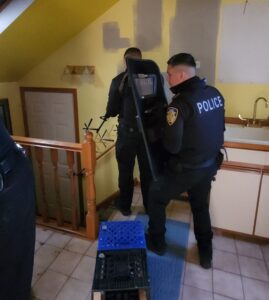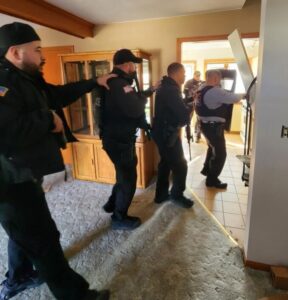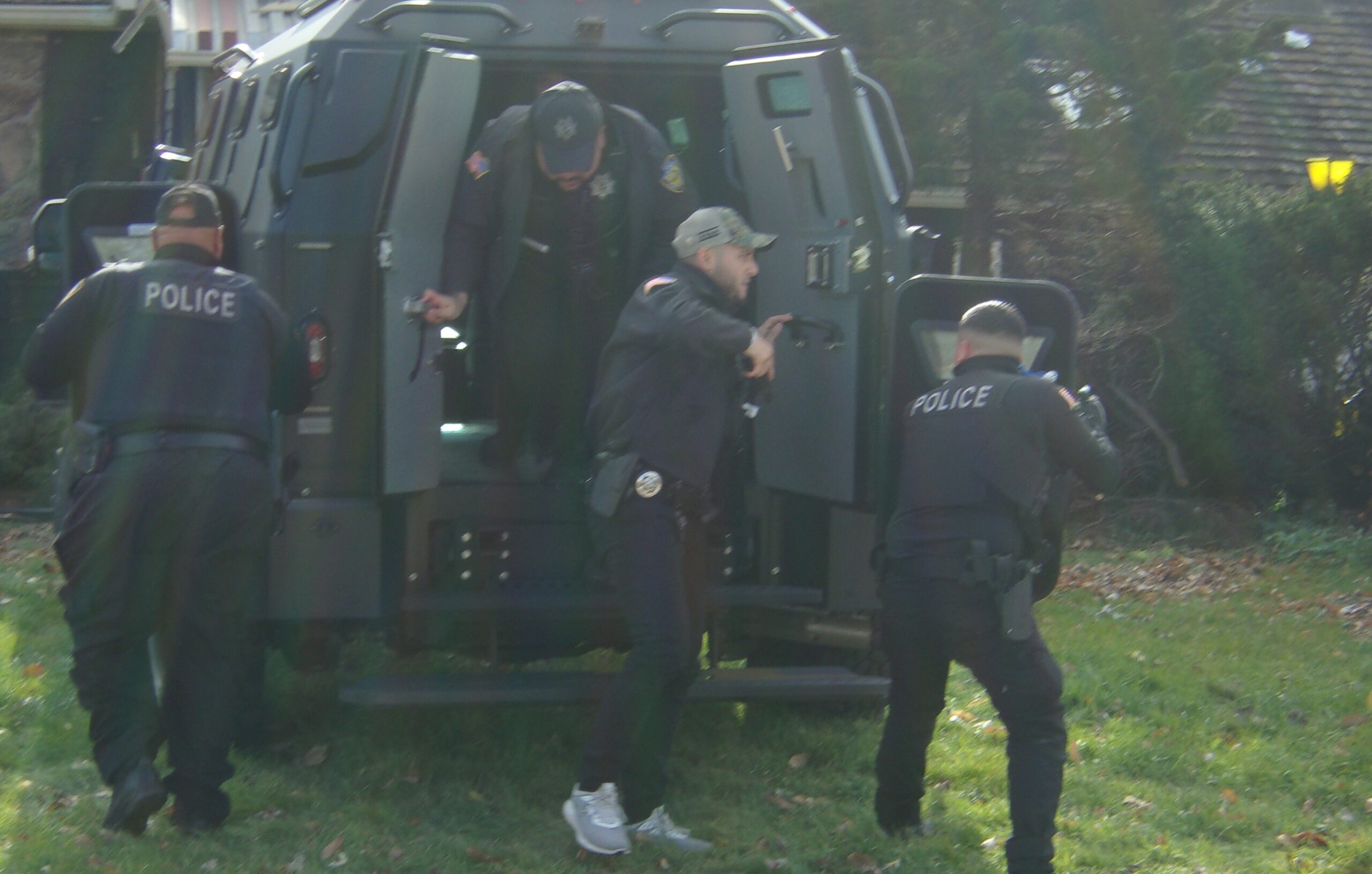
By Michael A. Black | Contributing Writer
It is often said that the way you train is the way you’ll react. I couldn’t agree more.
This past week I was privileged to observe one of the police training sessions at the Bridgeview, Illinois Police Department headed up by Chief Ricardo Mancha. This scenario-based training is now mandated due to new state-wide legislation and involved the participating officers in a role playing scenario.
The training day was overseen by Training Sergeant Dan Matuszak, whose impressive qualifications include 13 years in investigations and an assignment to the DEA taskforce before being assigned as a patrol supervisor and training sergeant. Matuszak emphasized that the goal of the training was to teach officers to think on their feet and respond appropriately when confronted with a problematic situation that they might very well experience during the course of a shift.
They were presented with this problem upon their arrival at the station and had no prior knowledge of what it might be. It should also be noted that all but one of these officers have no SWAT training and are not members of the multi-jurisdictional 5th District SWAT team, but they are members of the same squad.
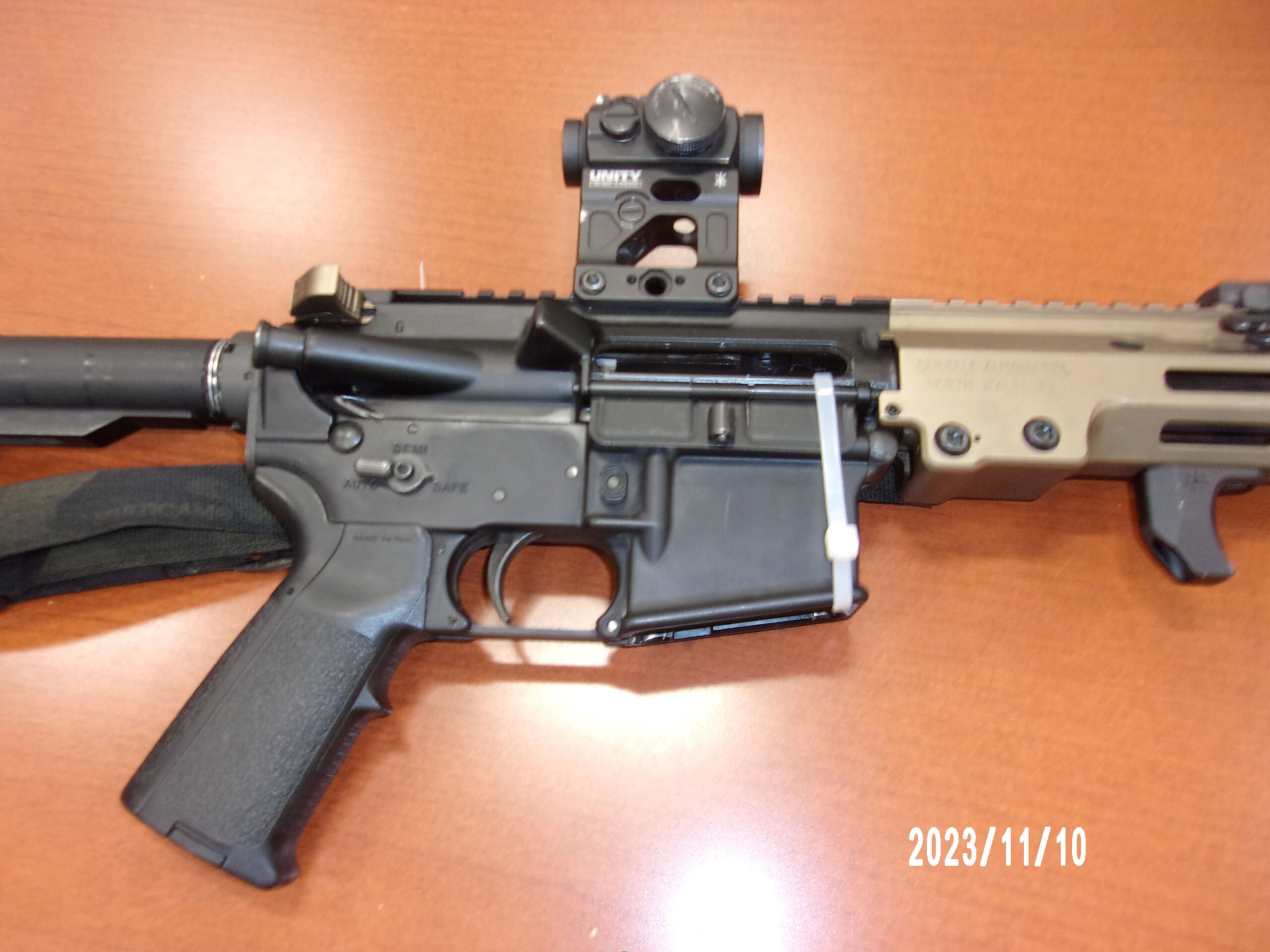
The scenario presented involved the squad being called upon to assist the DEA on a search warrant of a suspected drug house in a residential area. The suspects in the residence were described as “disgruntled ex-military vets who had turned to drug trafficking to gain funds for a militant organization.” Officers were given photos of the target residence and told that a confidential informant was inside along with an unknown number of suspects. They were then told to formulate a tactical raid plan.
Using a white board in the conference room, the officers quickly dispatched a containment team to observe the target house while the rest of the team assembled their equipment and devised their plan. Since this was a live role-playing scenario, safety protocols were in place. The officers were to carry their duty weapons, but each gun was unloaded, inspected, and secured with a zip-tie to ensure no accidental discharges would occur. The weapons were checked several times prior to the departure for the target house. A chain of command was also established at this time, designating the team leader and second in command, should the primary leader become disabled.
As far as equipment, each officer had his (or her) duty pistol, two of them also had long guns (AR-15 rifles), two ballistic shields, police radios set to a talk-around frequency, and an armored Terradyne built on an F-550 Super Duty chassis. Additionally, each team member had a quick-application practice-tourniquet to treat any simulated gunshot wounds.
With the perimeter officers maintaining visual surveillance, and the ambulance on the next block in the staging area, the team was ready to roll in the truck with the six-man team in the back. The officers with the ballistic shield sat next to the door and when the vehicle pulled up onto the front lawn of the target house the shield-bearing officers were the first out and took up cover positions on either side of the fortified vehicle. Four team members assembled by the front door and two others, one carrying a shield, went to cover the rear door. Since this was a “knock-and-announce warrant,” the proper procedure was followed after which the front door was breached. It was part of the plan that if the front door breach was unsuccessful or came under fire, the team members at the back door would then make entry.
Once inside, the team split into pairs, using the shields as cover to clear the rooms on the first floor in a precise and methodical fashion. Such aspects of room clearing such as avoiding crossfire positioning and proper handgun target acquisition while holding a shield were practiced. Officer Mark Zajac, who is a SWAT team member, later told me that their firearms training on the range includes practicing the proper canting of the pistol to aim around the ballistic shield. This is a skill that must be mastered, although Zajac has a laser sight mounted on the rails of his handgun to facilitate quick sighting in a shooting situation. These shields also have an LED light mounted on the front, with off/on switches on the handle. The light can be used in an unlighted building search and also to disorient an adversary.
The role players inside the house gave the team all the unexpected problems they could handle, offering belligerent resistance that included “shooting and wounding” the aforementioned confidential informant. After disabling (and neutralizing in one case) the hostage taker, one team member applied one of the practice tourniquets to the injured informant’s leg. He was then physically carried out the front door by two officers in a fireman’s carry and loaded into the trunk of a waiting squad car, which took him to the stationed ambulance. Radio communication was practiced between the team and the perimeter officers during this evacuation.
Another problem inside the house was an extremely tight spiral staircase, which led to the second floor. This staircase resembled something from a yacht and could only be ascended by one officer at a time. Proper cover positioning was practiced during the clearing of the second floor, during which another role player confronted the officers.
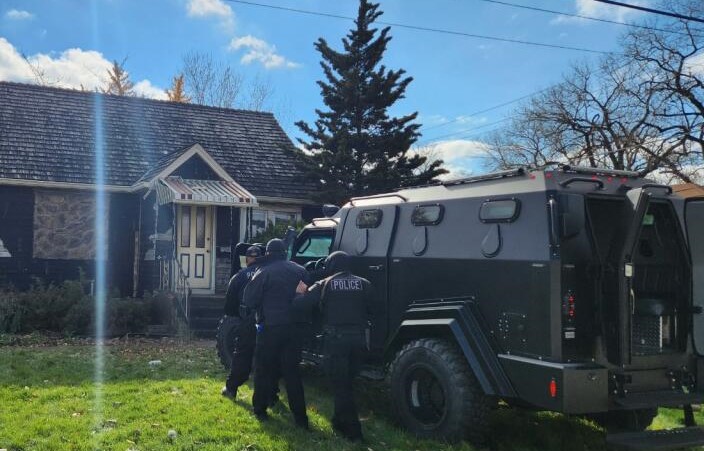
After this second suspect had been apprehended, and the rest of the house cleared, the cache of “dope” was found in the kitchen. The training scenario was called to a halt and a debrief was conducted. It was then revealed that the officers had missed a second concealed gun on one of the bad guys, but this particular officer, a marine combat vet with so much shrapnel in his body that he sets off metal detectors, is a literal magician at concealing his wares. The slogan was, “Make your mistakes in training so you don’t make them on the street.” Good words to train and live by.
Once the debrief was concluded, the team reassembled, and the perimeter officers were then selected to be part of the entry team and the scenario was repeated with a bit of variance. The clearing drills were repeated several more times as the day wore on, and when the training was finally concluded for the day, everyone had a weary, but proud sense of satisfaction.
I was very impressed with the training and professionalism of the Bridgeview officers, but what lessons can we take away from this for armed, non-law enforcement citizens?
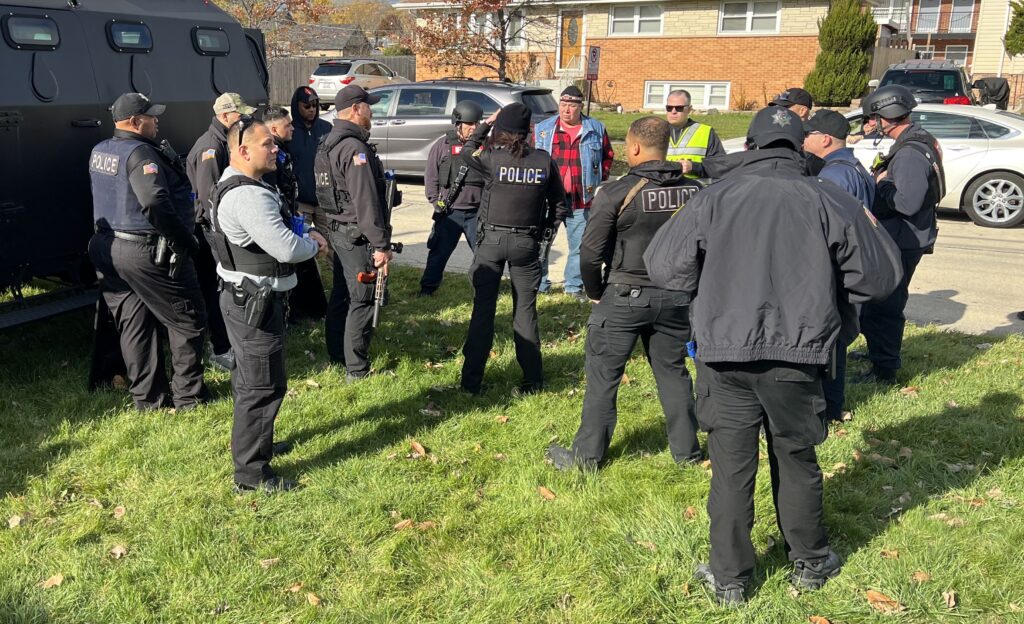
Well, first and foremost, know that you must be familiar with your guns and spend some time at the range practicing. The old saying, the more you practice what you know, the more shall you know what to practice, so do your training and become proficient.
Regular practice develops muscle memory and nerve pathways will make drawing and assuming a proper firing position second nature.
Second, practice safely. My father used to tell me the most dangerous gun was an “unloaded gun.” It’s also a good idea to maintain a degree of proficiency with other gear, such as flashlights, and regularly check the batteries in them. Finding out in an emergency that you’re without a light device is not a pleasant discovery.
Be ready and always be aware of your surroundings as you establish an emergency plan. The last thing you want is to be caught flat-footed should exigent circumstances occur.
Make wise firearm choices to suit your individual needs, and store your guns safely, but know where they’re at and practice removing them in the event of an emergency. Gun lock boxes are readily available and provide safe storage and easy access.
Practice your movements. You don’t need a loaded gun to practice this. Predetermine cover and concealment points, and make sure your loved ones are familiar with your plan as well. (Remember those fire drills we all did in grammar school? They worked.)
Know what you want to say in an emergency to both an offender and to your family and friends. Clear and precise communication is paramount.
Okay, I think that about covers it, but remember our opening line: the way you train is the way you’ll react. Good luck.

